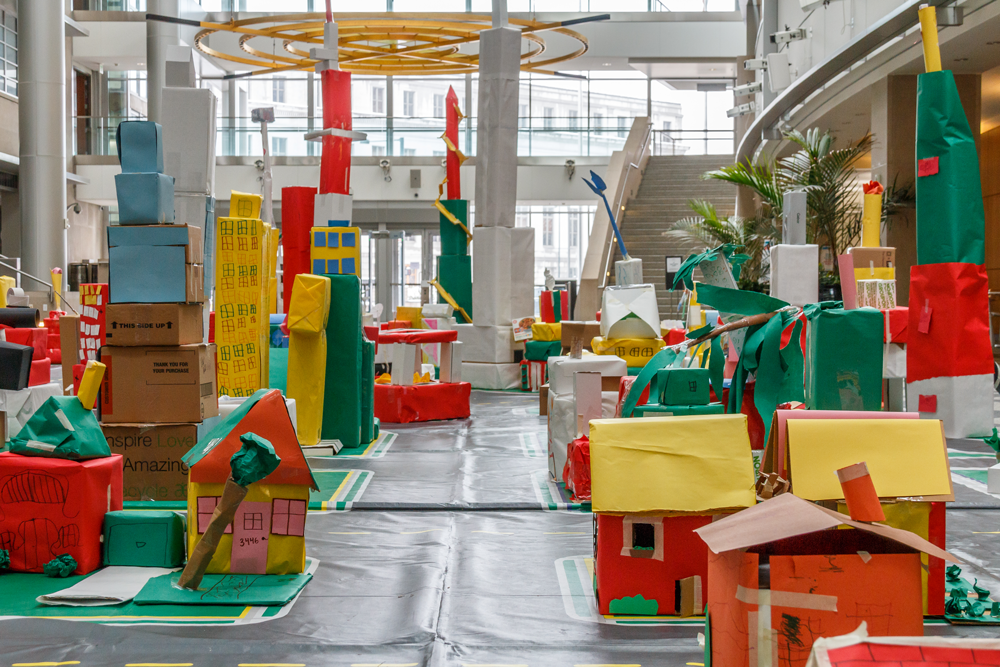What Is Planning?
Urban Planners Collaborate with Communities
Urban planning shapes land use, infrastructure, and community development
What is planning?
Take a moment to wonder about your community. Why are homes located in a specific area? Why are businesses or factories located in another? How did someone decide where the roads would go — and how many lanes each road would have? How much park or open space is available to play in? Can you easily walk to a bus or train to get to your destination?
These questions are what planners think about and are at the heart of planning as a profession. The goal of planning is to maximize the health, safety, and economic well-being of residents in ways that reflect the unique needs, desires, and culture of those who live and work within the community.
Planning considers the big picture
While architects often focus on a single building, a planner's job is to work with residents and elected officials to guide the layout of an entire community or region. Planners take a broad viewpoint and look at how the pieces of a community — buildings, roads, and parks — fit together like pieces of a puzzle. And, like Daniel Burnham and Edward Bennett did with the 1909 Plan of Chicago, planners also work to imagine what can and should happen to a community: how it should grow and change, and what it should offer residents 10, 15, or even 20 years into the future.

Box City teaches children about the process of urban development and the principles that make for sound architecture, design, and planning. Photo by Ryan Dravitz.
Each community is divided into parcels, or pieces, of land. The use of each parcel of land is guided by the community's zoning code. The zoning code is a set of rules that defines what each land parcel could or should be used for (such as housing, manufacturing, or open space). Zoning codes try to keep different uses from conflicting with one another. For example, imagine a company wants to buy the apartment building next door to you and convert the building into a factory, but the rest of the street is residential housing. A factory can have significantly different characteristics from a residential apartment: a large number of workers coming and going, freight deliveries, noise, and even the risk of hazards such as fires or chemical spills. Such a drastic change of land use would impact the character, quality, and feel of your street and your home. By zoning your street as a "residential" area, factories can be kept separate from housing.
Planning involves the entire community
Beyond trying to prevent land use conflicts, planning also entails providing community members with choices. Consider your home. Is it an apartment? Condo? Single-family house? How do you get around your community? Walk? Ride your bike? Take public transit? Is there any green space nearby? Are there any stores? Planning helps to ensure that you have choices when it comes to what type of home you want to live in, how you move around the community, and what is available nearby.
Planning includes considering ways to make communities safe and healthy for all ages. Safety includes factors such as ensuring you have areas to walk, ride your bike, or play. Can you safely cross the street to reach your grocery store? Can your grandparents? Beyond everyday risks, planners also look at larger hazards that could impact the safety of a community. Disasters such as floods and wildfires can devastate a community. Planners look at the potential risk a community might face if a river rises beyond its banks. How close are the buildings that could be flooded? What can be done today, before a disaster happens, to minimize the risk and damage if the river overflows in the future?

Through the collaborative efforts of partners in the complex, along with the Vidant Medical Center Foundation and the Department of Transportation, the east and west sides of the complex are connected by one of the first "rural" crosswalks in the state. Photo courtesy Tracy B. Cash, Pitt County Planning Department.
Planning looks ahead
Planners are always thinking about today but also about what tomorrow might bring. A community plan must meet the needs of its residents today but also keep the future in mind. A community plan, often called a comprehensive plan, is a kind of map or blueprint for what a community aims to achieve in the future. Perhaps your ancestors moved around their communities by walking or by horse and carriage. Trains and automobiles came along and changed how people traveled — and the landscape itself by requiring roads and tracks. What's next that could potentially impact your community and how you live, work, and socialize? Next time you walk around your community, consider some basic questions: Who planned that? How was that decision made? What will happen to this neighborhood in the future? If these questions seem interesting to you, you might want to be a planner!


